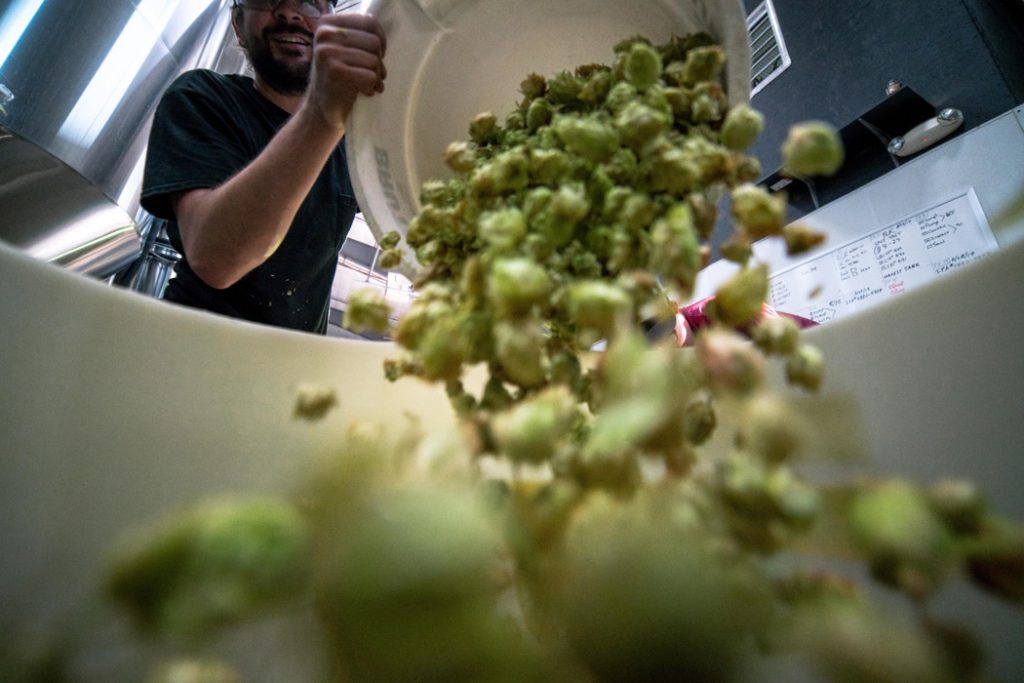
Imagine a shopper coming out of the grocery store with three full bags of food. Along the way to their car, they spot a convenient dumpster and promptly throw one entire bag of groceries away before driving off with the remaining two.
Obviously, this makes no sense whatsoever. But as it turns out, this is exactly what the entire world already does on a daily basis.
Globally, 1.3 billion tons of food are wasted per year—about one third of all food meant for humans. This statistic is even worse for Americans, who waste an average of 40 percent of all food. We have a problem with food waste, a behavior that makes even less sense when you consider that one in ten individuals within the United States experienced food insecurity at some point in 2019.
Let’s dive into the psychological and economic factors driving food waste and explore some possible solutions. Specifically, let’s look at where waste occurs during growing the food, selling the food, and eating the food.
Food Waste in Production
There are several ways that food can be lost in the production process. Monocropping, the practice of using land to exclusively grow one kind of crop, is one driver of food loss because it makes plants more susceptible to diseases that can spread and kill crops rapidly.
The food waste problem also lies in what the products are used for. Large quantities of soybeans and an estimated one-third of global cereal production go toward feeding livestock. In fact, 14 percent of global livestock rations are edible by people. This food waste is unnecessary as livestock could otherwise consume plenty of other foods that are inedible to us.
As for the rest of the human-edible food, much of it is discarded simply for not meeting cosmetic standards. This is why many companies, such as Imperfect Foods and Misfits Markets (which both serve Fairfield), are creating inexpensive markets for irregularly shaped or colored fruits and vegetables.
Food Waste in Distribution
When shopping at a grocery store, many people pay close attention to the expiration dates listed on food items, but they may not be aware that these labels are not standardized, are somewhat arbitrary, and often are not even related to the underlying safety or flavor of the food. Because so many shoppers pay attention to these labels, however, grocery stores have had no choice but to regularly discard perfectly edible food items. One Harvard study estimated that federally standardized pull-date labels could divert an estimated 398,000 tons of food waste from landfills and generate a total economic value of $1.8 billion for the U.S.
Supermarkets also overstock their shelves regularly to present the appearance of abundance to their customers. By overstocking, vendors are left with more food than they can sell, and much of it goes to waste. To address this, supermarkets could consider placing empty “prop” packages towards the back of their shelves, allowing them to appear fuller without wasting more money or food in the process.
The U.S. may also consider legislation to prevent wasteful activities in supermarkets. In 2016 France implemented a law in which supermarkets are penalized for throwing away food that could be eaten by people or livestock.
Food Waste by Consumers
As consumers, we can take a few lessons from the field of psychology to help us minimize our food waste. For example, statistics show that the average size of both refrigerators and dinner plates has grown substantially since the 1970s. This is problematic, because we often judge how much food we need based on how much empty space we see—whether it’s how full the fridge appears before we go grocery shopping or how packed our plate seems at meal time. But these are not reliable measures of how much food we require.
Research suggests that regularly taking a shopping list to the grocery store helps prevent overbuying. One study found a 20 percent reduction in food waste per capita among those who simply used shopping lists. The act of intentionally observing how much food you need may go a long way in preventing waste.
Finally, and maybe most importantly, consumers should not take pull dates at face value. As mentioned earlier, these labels are often arbitrary or somewhat meaningless when it comes to the safety and taste of food. To address this misunderstanding, the UK started an initiative called Look, Smell, Taste—Don’t Waste, with the idea being that if a food is past its pull date, you should perform a couple more tests to decide if it’s still good to eat.
Although food waste is a multidimensional problem, we each play a significant role in minimizing our own impact. By being more mindful about what we are buying and how much food we truly need, we can prevent precious resources, money, and time from going to waste.
